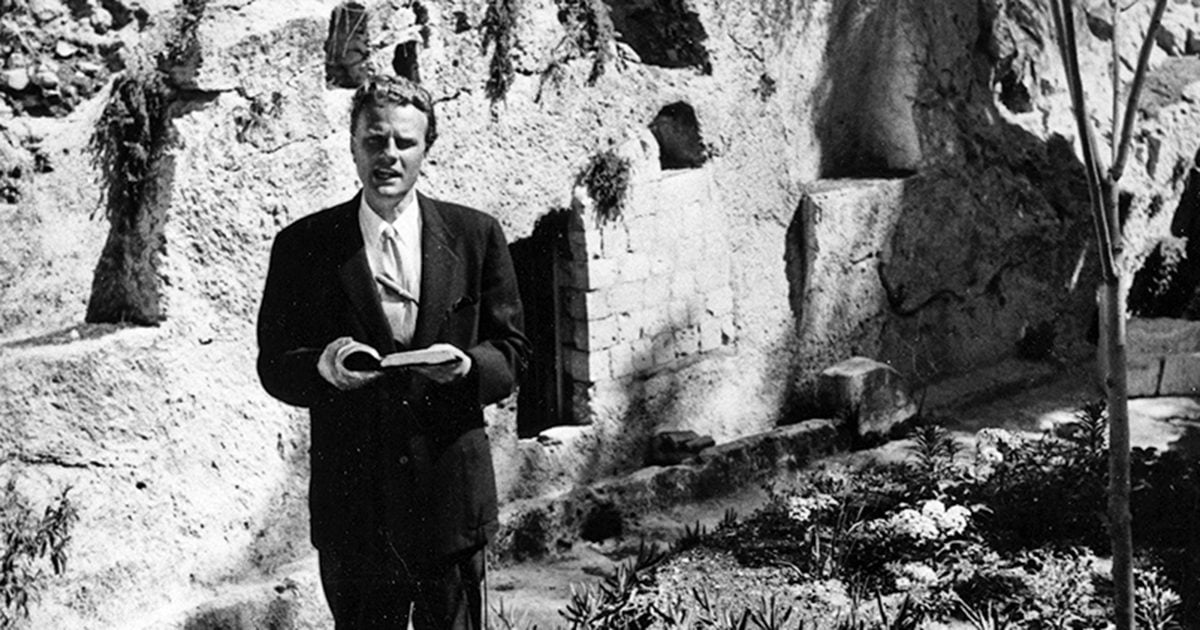The Life and Ministry of Jesus Christ
Jesus Christ, often referred to as the Son of God, holds a central position in Christianity. His life and ministry left an indelible mark on humanity, offering guidance, salvation, and hope. Let’s explore the duration of Jesus’ earthly life, focusing on the period before and after His resurrection.
How Long Was Jesus on Earth?
The Duration of Jesus’ Earthly Life
The life of Jesus can be divided into two significant phases: the time before His resurrection and the period following this miraculous event. Understanding the duration of each phase helps us gain a deeper appreciation of His earthly journey.
How Long Was Jesus on Earth Before and After His Resurrection?
Before His Resurrection: Jesus’ Time on Earth
Before Jesus’ resurrection, His time on Earth can be characterized by His birth, His ministry, and His crucifixion. Let’s explore each of these aspects in a practical and engaging manner.
The Birth and Early Years
Jesus’ journey on Earth began with His humble birth in Bethlehem, a small town in Judea. The circumstances surrounding His birth were extraordinary, as He was born to the virgin Mary, fulfilling prophecies of the Messiah’s coming.
The exact duration of Jesus’ early years is not explicitly mentioned in the scriptures. However, we can infer that He spent His childhood in Nazareth, growing up in a typical Jewish household. It was during this time that He developed into a young man, preparing for the remarkable ministry that lay ahead.
An example from scripture that sheds light on Jesus’ early years is the account of His visit to the temple at the age of 12. In Luke 2:41-52, we learn how Jesus, along with His parents, traveled to Jerusalem for the Passover feast. After the feast, His parents began their journey back home, assuming Jesus was with their relatives. However, they soon discovered that He was missing and returned to Jerusalem to find Him in the temple, engaging in deep discussions with the religious leaders. This incident highlights Jesus’ wisdom and understanding even at a young age.
The Ministry Years
At around the age of 30, Jesus embarked on His public ministry, which lasted approximately three years. His ministry was characterized by teachings, miracles, and the gathering of disciples.
Jesus traveled extensively throughout Galilee, Judea, and other regions, sharing His message of love, repentance, and the coming Kingdom of God. His teachings, often delivered through parables, captivated the hearts and minds of those who heard Him.
One of the most renowned examples of Jesus’ teachings is the Sermon on the Mount, found in Matthew 5-7. In this sermon, Jesus provided practical instructions on topics such as humility, righteousness, forgiveness, and love. His teachings challenged societal norms and emphasized the importance of inner transformation.
Jesus’ ministry was not solely about words; it was accompanied by powerful acts of compassion and supernatural demonstrations. He healed the sick, gave sight to the blind, raised the dead, and performed various other miracles. These miracles were tangible manifestations of His divine authority and served as signs pointing to His identity as the Messiah.
The feeding of the five thousand, as recorded in Matthew 14:13-21, is a remarkable example of Jesus’ compassion and ability to provide for the needs of the masses. With just five loaves of bread and two fish, Jesus multiplied the food to feed the large crowd, leaving an abundance of leftovers. This miracle showcased His power over scarcity and His desire to meet both the physical and spiritual needs of people.
The Crucifixion
The culmination of Jesus’ earthly ministry came with His crucifixion, a pivotal event in human history. The crucifixion took place in Jerusalem, where Jesus willingly offered Himself as a sacrifice for the sins of humanity.
The crucifixion occurred when Jesus was approximately 33 years old, according to most biblical scholars. Jesus endured immense physical and emotional suffering, willingly laying down His life to fulfill the divine plan of redemption.
The crucifixion of Jesus serves as a profound example of His sacrificial love and His willingness to bear the consequences of our sins. Through His death on the cross, He bridged the gap between humanity and God, providing the opportunity for forgiveness and reconciliation.
An example from scripture that portrays the crucifixion is found in Luke 23:33-49. The account describes the agonizing process of Jesus’ crucifixion, His interaction with the two criminals crucified alongside Him, and His final words before His death. This event represents the ultimate expression of Jesus’ love and the depth of His sacrifice.
After His Resurrection: Jesus’ Time on Earth
The resurrection of Jesus Christ is a transformative event that holds immense significance in Christianity. After His resurrection, Jesus spent a brief period of time on Earth before ascending to heaven. Let’s explore this post-resurrection phase in a practical and engaging manner.
The Resurrection and Post-Resurrection Appearances
On the third day after His crucifixion, Jesus rose from the dead, conquering death and demonstrating His divine power over the grave. His resurrection not only validated His claims of being the Son of God but also symbolized victory over sin and the hope of eternal life.
Following His resurrection, Jesus made several appearances to His disciples and various individuals. These post-resurrection appearances served multiple purposes, including providing evidence of His resurrection, strengthening the faith of His followers, and imparting important teachings and instructions.
For example, in John 20:19-29, we read about Jesus’ appearance to His disciples in a locked room. He showed them His wounds, comforting them and reinforcing their faith. This encounter also highlights Thomas’ doubt and subsequent belief upon seeing Jesus, emphasizing the importance of faith in the resurrection.
During the forty days that followed His resurrection, Jesus appeared to His disciples and others on multiple occasions. His interactions with them provided reassurance, dispelled doubts, and prepared His followers for the mission that lay ahead.
The Ascension
Forty days after His resurrection, Jesus ascended into heaven in the presence of His disciples. The ascension marked the end of Jesus’ physical presence on Earth and His return to the heavenly realm.
The ascension holds great significance as it signifies Jesus’ exaltation and the assumption of His rightful place at the right hand of God. It also paves the way for the coming of the Holy Spirit and the birth of the early Christian Church, as described in the book of Acts.
Though the ascension marked the conclusion of Jesus’ physical presence on Earth, His influence and teachings continued to shape the lives of His followers and the course of human history.
Jesus was on earth for at least 40 days after His resurrection.
The Bible tells us that Jesus was on earth for at least 40 days after His resurrection. This means that the time between His resurrection and ascension was at least 40 days, but it could have been more.
The reason we know this is because when Jesus appeared to His disciples, He asked them how long it had been since He died. He told them, “What did you eat the day I was arrested?” (John 21:12). Then He said, “You will be my witnesses in Jerusalem, in all Judea and Samaria, and to the ends of the earth” (Acts 1:8).
If you add up these two events—the time between Jesus’ death and when He appeared to His apostles—it came out to about 40 days. But if you add up all of these events from John 11:23-27 until Acts 1:3-8, it comes out to about 43 days. That means that it’s possible there were an additional 3 days between these events or that some of those 43 days were part of the 40-day period mentioned above.
The 40 days is significant because it is the same amount of time that Moses spent on Mount Sinai before returning to Egypt with the Ten Commandments (Exodus 24:18). It also represents the time period between Passover and Pentecost (Acts 2:1-21).
Passover and the Feast of Unleavened Bread immediately followed Jesus’ death.
Jesus’ resurrection was on a Sunday, which was the day before Passover. That means that Jesus was on Earth between Friday and Sunday.
The feast of Unleavened Bread began when the lamb was slain at the start of the 14th day of Nisan (the 15th day of Abib). After this first night, the people were to eat unleavened bread for seven days. The next day was the first day of Unleavened Bread, which is also called the Feast of Unleavened Bread. This is when Jesus appeared to his apostles in Jerusalem (Acts 1:3).
The Feast of Weeks occurred 50 days after Passover, according to the Jewish calendar.
Jesus was crucified on Passover and rose from the dead on Sunday, which was the first day of the week. He appeared to his disciples on several occasions before ascending into heaven (Luke 24:36-50; John 20:19-23).
The timing is also significant because it marks a time when Jews would normally be celebrating the Feast of Weeks. This festival commemorates Moses receiving the Ten Commandments at Mount Sinai and God giving him instructions for building an altar there.
This feast is also known as Pentecost or Shavuot and is celebrated by Christians today as well as Jews in their own way. The Bible says that it was during this festival that God gave his people their laws and also sent them some special signs—such as manna appearing daily in the desert—to show them how much he cared about them (Exodus 16).
At the Feast of Weeks, the Holy Spirit descended upon Jesus’ disciples.
The Feast of Weeks, also known as Pentecost, is celebrated on the fiftieth day after Passover. It commemorates the day that the Holy Spirit descended upon Jesus’ disciples, who had gathered together in Jerusalem to pray for guidance.
The exact date of this event is not recorded in the Bible. However, since Jesus died on a Friday and rose from the dead on Sunday, it is believed to have occurred sometime between Sunday and Thursday.
Signs that Jesus showed his disciples after his resurrection.
1. Jesus appeared before his disciples in the upper room and showed them his hands and side, which were still bleeding from his wounds.
2. Jesus ate with the disciples.
3. The doors were locked, but Jesus entered the room anyway, showing that he could pass through locked doors.
4. The disciples touched Jesus’ body and felt the wounds in his hands and side (Luke 24:36-43).
Conclusion
In conclusion, Jesus Christ spent approximately 33 years on Earth before His resurrection and a further 40 days after His resurrection before ascending into heaven. His earthly journey encompassed His birth, ministry, crucifixion, resurrection, and ascension.
Understanding the duration of Jesus’ time on Earth allows us to appreciate the magnitude of His impact and the significance of His sacrifice. His teachings, miracles, and ultimate victory over death continue to inspire and guide believers worldwide.
By exploring the practical aspects of Jesus’ life, ministry, and post-resurrection experiences, we gain a deeper understanding of His profound love, His willingness to lay down His life, and the hope He offers to all who follow Him.
May the life, death, and resurrection of Jesus Christ serve as a constant reminder of the enduring message of redemption, forgiveness, and eternal life found in Him.

